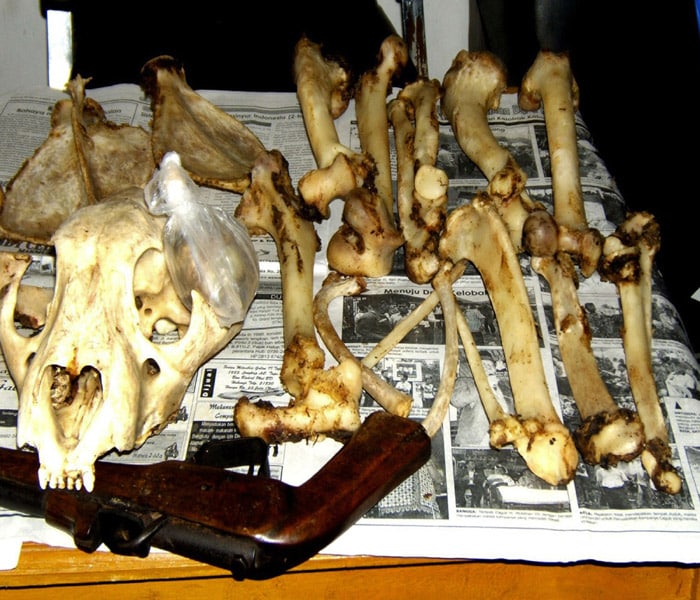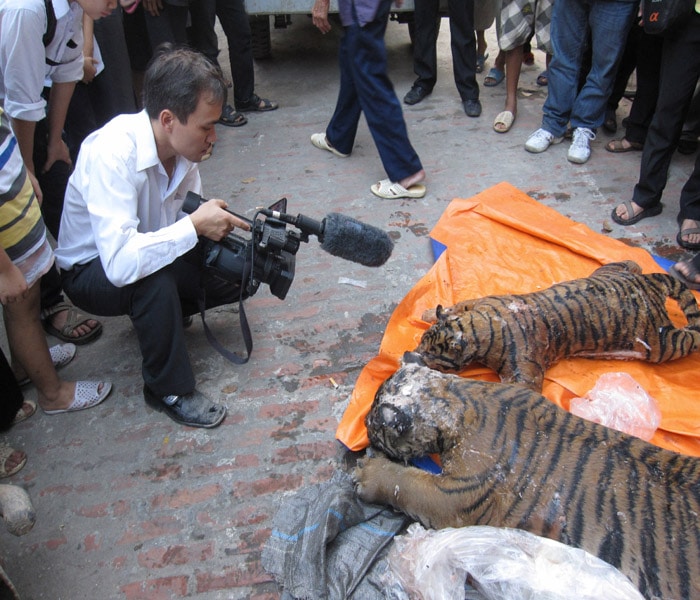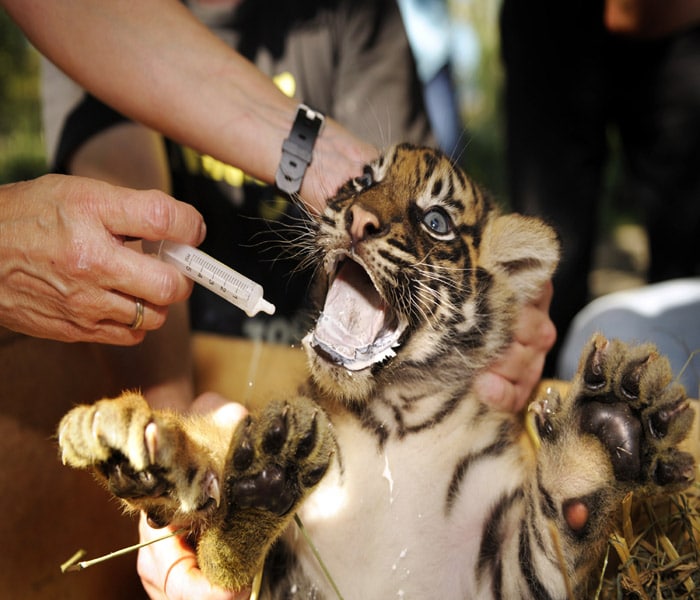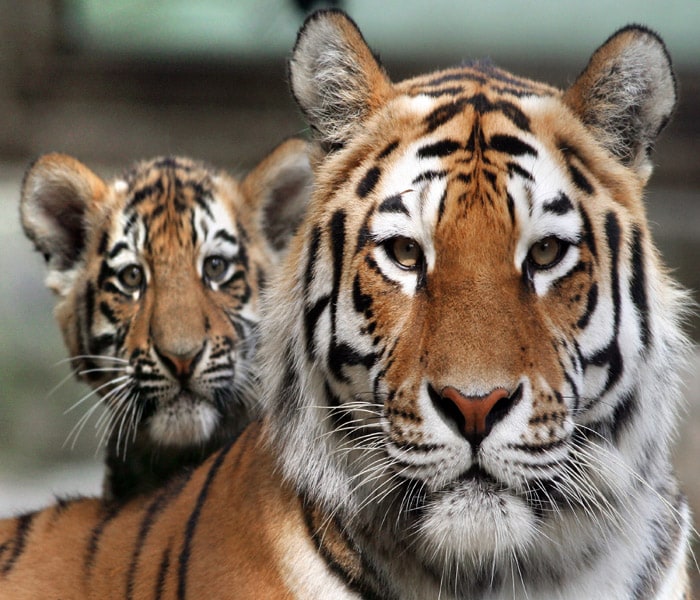Eye on the Tiger?
On the brink of extinction, the tiger faces an even greater threat from poaching than from habitat loss.
-
As if habitat loss was not enough, tigers also have to contend with Poaching.
Regardless of the tigers' classification as a "Critically Endangered" species, the demand for its parts has drastically increased at an alarming rate since the end of the 20th Century.(AFP Photo) -
At the turn of the 20th century, according to sources, India had an estimated 40,000 tigers in the wild.
In 2002, based on pug mark census, this number was 3,642.
As per the monitoring exercise by Wildlife Institute of India in association with National Tiger Conservation Authority (NTCA), Government of India using camera traps, in 2008 we were left with only 1,411 tigers. This number is so small that they will be gone soon if we don't wake up to the crisis.(AFP Photo) -
The trade in tiger bones, destined for use in Oriental medicine outside India's borders, is posing a large threat to the depleting Tiger population.
Having decimated their own sources, Far Eastern traditional medicine manufacturers are now targeting India for their supply of tiger bones.
Poaching of tigers for the traditional Chinese medicine industry started in northern India in the mid-1980's.(AFP Photo) -
Poachers use one of the following methods to kill a tiger:
Poison - which is usually placed in the carcasses of domestic buffaloes and cows.
Steel Traps - which are made by nomadic blacksmiths. These traps are immensely strong.
Firearms - are used where hunting can be carried out with little hindrance.
Electrocution - by tapping 230 volts -11KV overhead electrical wires and laying a live wire on animal tracts.(AFP Photo) -
India holds over half the world's tiger population.The strategy for tiger conservation in India has revolved around the National Tiger Conservation Authority and the Wildlife (Protection) Act, 1972.
Tragically, these conservation successes were short lived. -
Despite all these problems, India still holds the best chance for saving the tiger in the wild. Tigers occur in 17 States within the Republic of India, with 5 States reportedly having population in excess of 100 tigers.
There are still areas with relatively large tiger population and extensive tracts of protected habitat.
There are a number of dedicated organisations that are effectively involved in hands-on tiger conservation.











